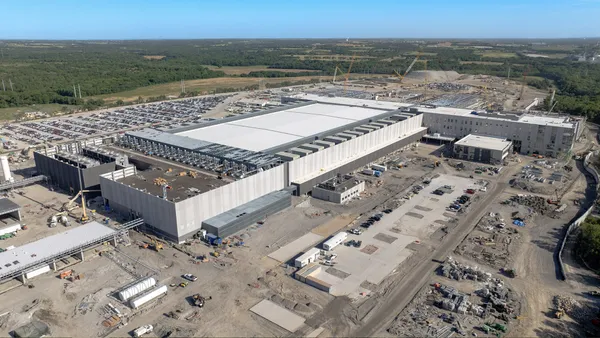Roz Buick is the senior vice president of strategy and development at Oracle Construction & Engineering. Opinions are the author's own.
The success of construction projects depends on thousands of interconnected decisions made every day, at every level, across multiple organizations, making them highly complex. Inefficiencies and risks can inevitably lead to additional project costs and delays that can grow exponentially along with the size of the project.
While the industry has adopted technology in the form of point solutions and first-generation platforms to solve specific issues over the last 20 years to improve efficiencies, there remain some challenges in the industry when it comes to data. The data from these disparate solutions is often siloed, locked away in specific applications and their proprietary formats, which prevents E&C businesses from getting a holistic view of performance across processes, projects, or portfolios.
How can E&C businesses ensure they are getting the most out of their technology investments? The answer lies in improving how data is managed.
Connecting teams and information with a common data environment
A true common data environment (CDE) is critical to driving trust and collaboration between members of the project team, and it is often the missing component in engineering and construction organizations' digital transformation and automation strategies.
A CDE is a cloud-based space where information from construction projects is stored and accessible to project participants. Operating within a CDE significantly improves project collaboration and information management by connecting teams, models, and all other project data in one shared environment, producing a complete digital project record.
By using a CDE, each project team member has accessibility to the data they need to make informed, proactive decisions — the key to driving efficiencies and continuous improvement.
Gaining an edge with predictive AI
Historically, business intelligence technologies have generally provided only a backward-looking view into project data. While it is valuable to analyze what occurred on past projects, what if you could improve your chances of delivering a project on time and on budget by using data to predict what is likely to happen throughout the construction process?
New advancements in AI have unlocked another level of project intelligence, enabling predictive insights to drive better decision-making to improve project outcomes. This transformative change in data science for the industry yields a dynamic view into such variables as:
- The factors which might delay a project.
- The probability of delay on a project.
- Amount of predicted delay.
- Likelihood (and severity) of a cost overrun.
- Hidden risks around safety, design, rework, and litigation.
These AI technologies are powering active intelligence, helping organizations learn from the past while continually assessing the present. Active intelligence yields predictive insights that add value to nearly every aspect of construction project management, including critical areas such as cost/budget, schedule, collaboration, quality, safety, and risk.
Such technologies enable organizations to regularly monitor developments and adjust plans using real-time predictive insights. These systems produce dynamic intelligence, with the ability to learn from their re-trainable machine learning models, growing smarter and more accurate over time. With the insights this process yields, organizations can more easily empower their project teams with the right intelligence to make smart, timely decisions.
Intelligent platforms driving industry-wide transformation
The E&C industry is under immense pressure to change as it confronts disruptions stemming from COVID-19, shifting project types, increased competition, and a retiring labor force. These pressures, combined with continued increases in complexity, have the industry rethinking every aspect of project delivery.
As the resultant adoption of technology grows and data proliferates, a new breed of intelligent technology platforms, powered by AI and ML "data backbone," can help organizations free their data and convert it into the intelligence needed to accelerate performance. E&C organizations can finally get the most out of their technology platforms, enabling them to succeed in the present, and learn from the past to improve future outcomes. Such intelligent platforms and data-driven approaches are the key to moving our industry forward.












